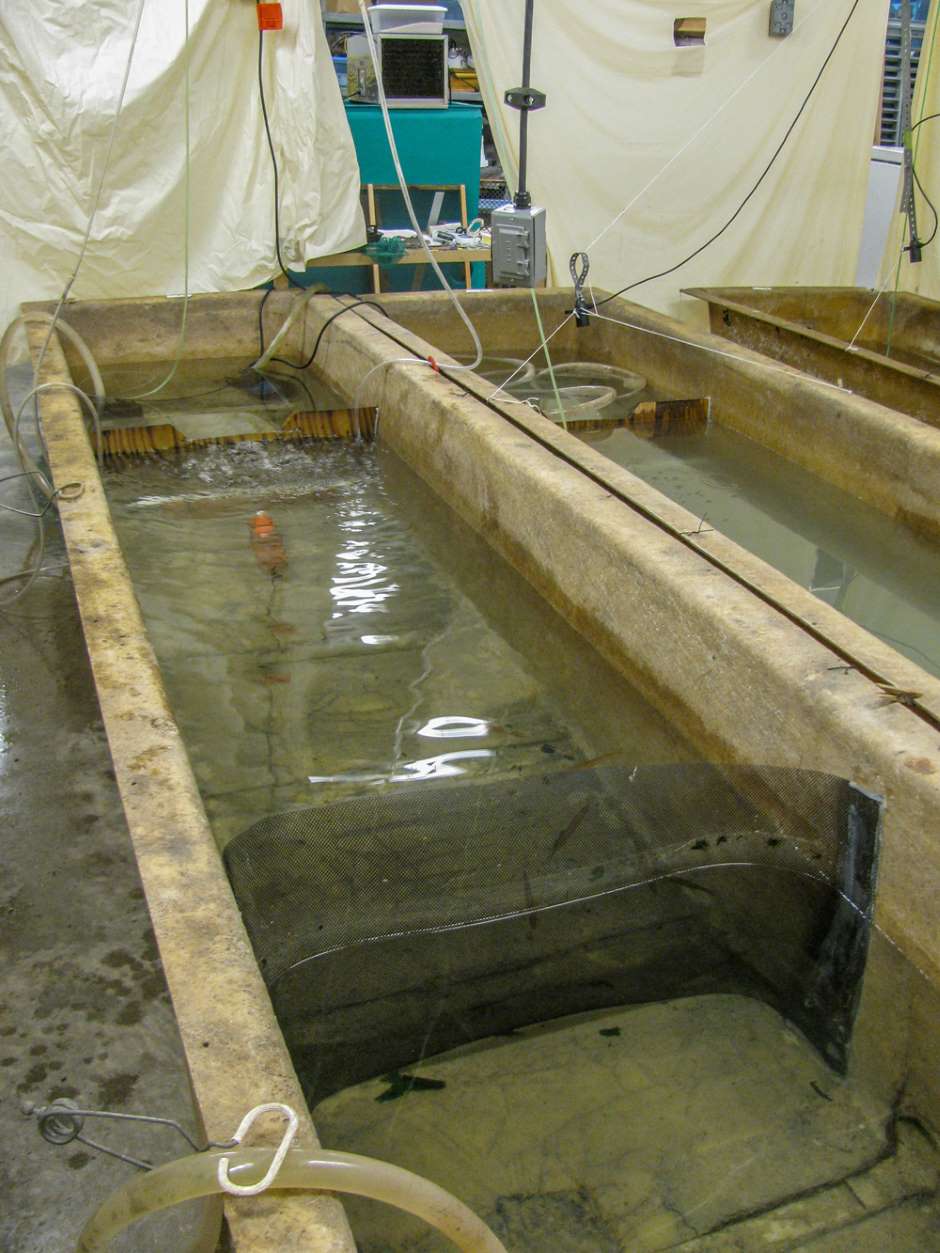Fishery Management and Muskies
 The model spillway used in the study
The model spillway used in the studyWell-known as a complicated fish, fishery management have their work cut out for them while trying to rear muskies throughout the United States. As many as 25 percent of the muskie stocked in some reservoirs are escaping over dams and swimming downstream, away from their intended fisheries. A 2013 study shows that the standard first line of defense for deterring fish movement may not be enough to corral them.
In response, fishery managers have had to adapt to new methods of herding the giant fish.
Lake Sam Dale in Southern Indiana is one of the impacted bodies, as reported in the 2013 study. With an estimated quarter of the muskies escaping its dam over a year, it’s reasonable to assume that the same thing is happening in reservoirs across the Midwest. According to Heather Stewart, faculty research assistant at Oregon State University and the Oregon Cooperative Fish and Wildlife Research Unit, that’s bad news for fishery managers and anglers alike.
“They’re fairly expensive to produce, so it gets to be costly when you’re constantly restocking these reservoirs so that people can fish them,” Stewart said. “It also affects their size structure when these larger fish are escaping, and you just have these smaller fish that people aren’t really wanting to go after as much.”
The Importance of Managing Muskies
The missing muskies also introduce a predator into downstream habitats. Downstream, muskies are able to take a bite out of native species. While muskies may be a prized catch for many fishers, they can wreak havoc outside their natural habitat.
Muskie can be aggressive and have a diet consisting of smaller fish, making their escape damaging. The damage caused by the outbreak is felt by both Muskellunge and native fish. Fishery staff cannot effectively monitor escaped muskies, making it harder for the fish to be adequately stocked. For natives, their fry may be targeted by muskies and smaller fish are likely to become prey.
Reservoir and Fishery management are pros when it comes to controlling fish and managing populations. Particularly when trying to regulate and maintain specific areas of aquatic bodies. Both new and old-school techniques are generally used to control fish.
Traditionally, nets and physical barriers like dams have been used, but unfortunately, they are often expensive and vulnerable to floating debris as nets catch debris and log up waterways. Some management teams have begun to use low-cost strobe lights and bubble curtains to prevent fish from entering new areas. These methods have been known to work well on Chinook salmon, largemouth bass and yellow perch.
Testing Fishery Management Methods
Until recently, bubble curtains and strobe lights hadn’t been tested on muskie. Prior to working at Oregon State, Stewart led research at the University of Illinois at Urbana–Champaign (partnering with the Illinois Natural History Survey) that tested how well a bubble curtain and strobe light could prevent juvenile muskies from topping a miniature dam built in the laboratory.
They pumped air through submerged, perforated PVC and flashed a strobe light once per second. The study analyzed the muskies’ response to both stimuli on their own and in tandem. They watched through video cameras to stay out of the muskies’ sight to better judge whether the bubbles and light could keep the fish from swimming over the dam.
They couldn’t.
“We actually found that the strobe lights seemed to attract the fish to the barrier, which is not ideal,” Stewart said.
Results and Limitations
The muskies’ behavior before making the leap made it clear that the flow over the dam wasn’t just sucking up helpless fish. The muskies generally propelled themselves over, and some swam over to check the dam out a few times before taking the plunge. The researchers theorized that the jumping behavior resulted from muskies being visual predators. Other daytime feeders and visual predators studied had a similar reaction to that of the muskie.
“Some of the fish jumped out of the water to go over the dam,” Stewart said. “To me, that says fairly obviously that they wanted to get over.”
Stewart said that the researchers flashed the light as fast as their equipment allowed but were limited. Future research might find that a more intense strobe is more effective. However, part of the appeal of strobe lights is the lower cost, which may not be the case with faster technology. Another method may be different colored strobe lights as they may be less naturally appealing to the muskie and more inexpensive than more rapid, high-tech devices.
Muskie Fishery Management in 2022
The effort to manage muskies continues with many problems still unanswered. Iowa State University has dedicated a research team to managing walleye and muskie populations in Iowa. In contrast to traditional barriers, a modified chain link fence may be used to keep muskies and walleye secure. This fence is reinforced with steel crossbars with two-inch gaps in between.
The chain-link fence has been successful so far and seems less vulnerable to clogging than other physical structures. The fence is also low-maintenance and inexpensive due to it being a more low-tech response.



0 comments